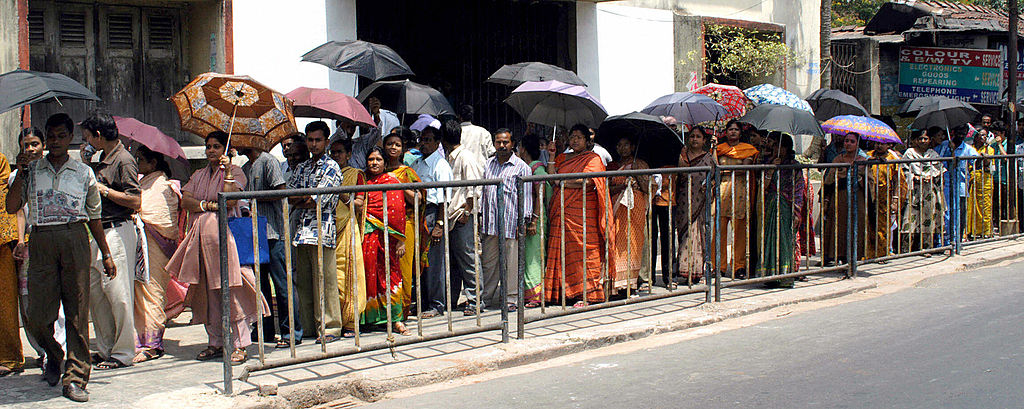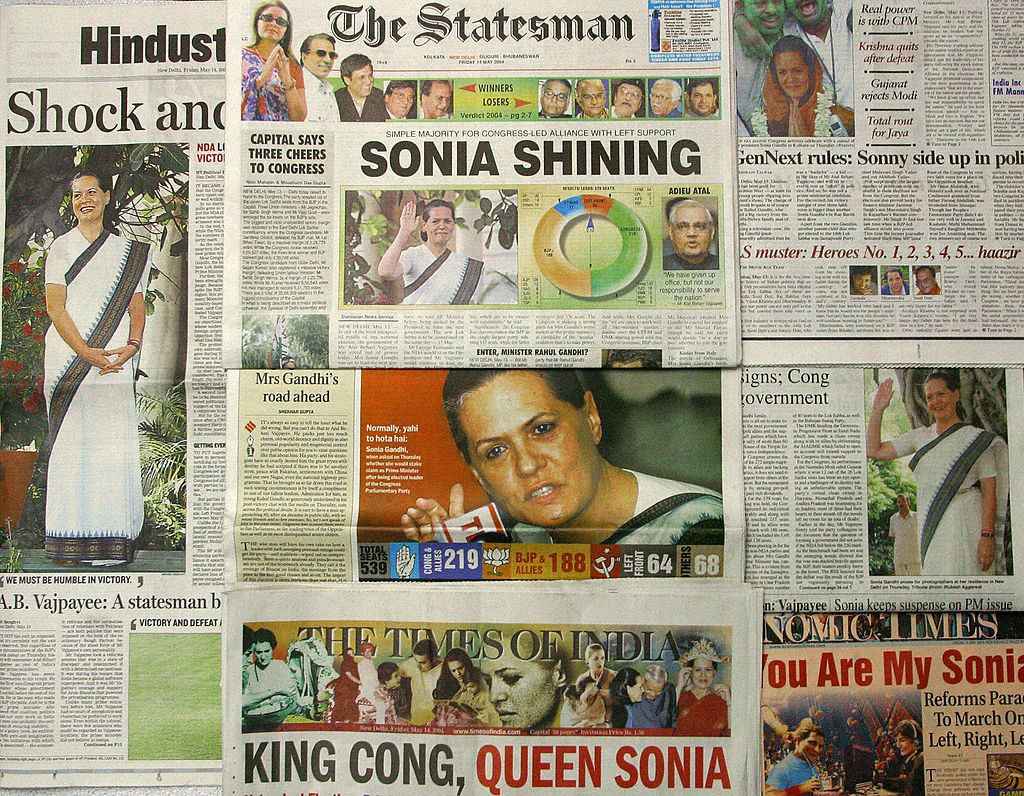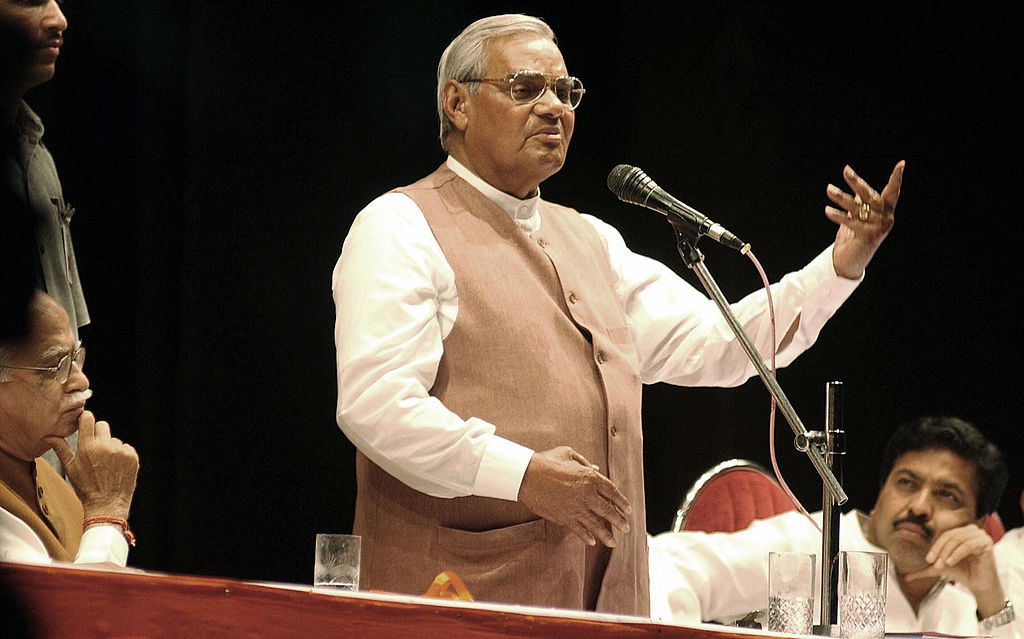- Sunday, April 28, 2024
While India used to hold its national elections in cooler months earlier, the BJP-led NDA government’s decision to advance the polls by eight months in 2004 started the new tradition of having the polling exercise in intense heat.

By: Shubham Ghosh
THE mercury is soaring in various parts of India with the 40-degree threshold being breached in many regions and it’s not even April. Just at this time, the world’s largest democracy is preparing itself for a 44-day electoral exercise to choose its next government. Candidates are campaigning in harsh weather conditions, aggravated by factors such as climate change, and on the day of elections, the voters would find themselves standing in long and crawling queues to exercise their franchise.
But why does India vote in such intense heat that could take a toll on its people’s health by remaining outdoors for long hours?
The reason is political. In 2004, the then ruling Bharatiya Janata Party (BJP) and its National Democratic Alliance, which is also in power currently, had decided to bring the national elections by not less than eight years to the summer because it was confident of winning a new mandate, basing on a high-flying ‘India Shining’ campaign.
Read: Savitri Jindal, India’s richest woman, joins Modi’s BJP after quitting opposition Congress
The ruling Hindu nationalist party led by then prime minister Atal Bihari Vajpayee was so confident, in fact over confident, of returning to power that even its opposition thought there could be no other result coming out in that election. Internal polls had also suggested a victory for the NDA and Vajpayee, a popular prime minister in those days, to become the premier for the fourth time.

But the experienced politician in Vajpayee understood that it would not be the case and they would be kicked out of power soon. When he told the same to his aide Shiv Kumar Pareek, he was taken aback. How could the well-devised ‘India Shining’ campaign led by such a popular leader go wrong? Pareek, who was Vajpayee’s longest-serving personal secretary, had told a news agency in 2018, the year the former PM passed away, that the latter had said that he could feel the pulse on the ground.
Read: Despite the trouble, Arvind Kejriwal is India’s only opposition leader who can take on Modi’s BJP
Till then, the general elections were held in the cooler months of September and October, when the weather stays pleasant. An over-confident BJP decided to hold the election in April and May that year instead, thinking that people were with the party and a favourable mandate would be easier to clinch.
Vajpayee was not in favour of the idea of making the national election an event to be staged in the harsh Indian summer when life becomes challenging for several. But deputy prime minister Lal Krishna Advani and the then BJP president M Venkaiah Naidu, who later served as the country’s vice president, thought otherwise and wanted to cash in on the feel-good factor that the party’s win in three crucial states in Rajasthan, Madhya Pradesh and Chhattisgarh the preceding year had brought.
The main opposition Indian National Congress could win only one state — Delhi.
The party was also confident about Vajpayee’s leadership, particularly after his government’s dealing with neighbouring countries such as Pakistan and China and conducting the nuclear tests in his second and third stint between 1998 and 2004.
The economy was also doing good at seven per cent growth rate and it also contributed to the BJP’s surging confidence.
Vajpayee was reluctant about holding early polls but the party had the last word and it proved to be suicidal, as did the ‘India Shining’ campaign, Pareek said in the interview in 2018.
Yet, the prime minister took the plunge, expecting that bringing the elections ahead would neutralise the anti-incumbency mood, if there is any. APJ Abdul Kalam, the then president, inked a proclamation of dissolving the House following the recommendation of the Vajpayee cabinet on February 6. Vajpayee had met him twice before that in the week before.

The exercise kicked off. The election in 2024 was held in just four phases and in 21 days. More than 5,400 candidates from six national and 36 state parties contested in a mammoth political event that saw participation of millions of voters and a massive security apparatus. The election commission also issued advisories against heatwaves, something it has done this year as well.
But the BJP failed to see that beneath the big claims of ‘India Shining’, discontent was growing high among certain sections of the voters, especially in the rural areas. The scorching heat and lack of electricity and water angered them even more.
“It is 40 degrees Celsius and you hardly have electricity or water, you are living in subsistence farming, are you really feeling good, really Shining’?” asked a Samajwadi Party candidate, campaigning near Kanpur,” author Ruchir Sharma wrote in his book, Democracy on the Road.
“The crowd laughed, giving us a first inkling that the BJP message might be missing its mark,” he added.
That the opposition understood where the BJP’s weak point lied also became evident in opposition leader Sonia Gandhi’s words at a slum in Delhi, “Where is India Shining?”
Vajpayee’s fears came true when the results came out on May 13. The BJP’s tally of seats slumped to 138 from 182 that it got in 1999. The Congress, on the other hand, increased its tally from 114 to emerge as the single largest party with 145 seats.
When the results were declared, the BJP had slumped to 138 seats from 182 in 1999. The Congress had bettered its tally from 114 in 1999 and emerged as the single largest party with 145 seats. Vajpayee, often considered among India’s best prime ministers, did not contest an election again.
Summing up the backfiring of the BJP’s ‘India Shining’ claims, Sharma penned in his book, “…the way urban elites had overlooked the depth of alienation in the heartland. We should have understood that voters who are struggling to subsist can’t eat impressive-sounding numbers like ‘8 per cent GDP growth’. While many of us had come back sceptical about ‘India Shining’, none of us had the courage to defy the consensus and call an outright BJP defeat.”
The act by the BJP to bring the elections ahead by eight months, coupled with the fact that there were no midterm polls since then as all governments were stable, meant that each Lok Sabha elected since 2004 has survived its full term and summer continues to be the time when the country goes to vote.
The elections of 2009, 2014 and 2019 have been held in peak summers and poll commission data over the years have shown that the voter turnout in the later phases of these elections has dipped due to the soaring temperature.
In 2019, for example, the voter turnout slumped from 69.50 per cent in the first phase, which was held in early April, to 64.85 per cent in the final phase held on May 19.
The 2009 and 2014 elections also saw a slight dip as polling continued in some of India’s most heat-affected regions.
In 2024, the election will kick off on April 19 and continue till June 1 with the results declared on June 4. Elections will be held in the entire month of May, considered the hottest in the country. Besides 543 Lok Sabha constituencies, voting will also take place in four states and 35 by-elections.
In elections in the harsh Indian summer, it is not just the political parties and the leaders but also the voters who face the heat.
![]()